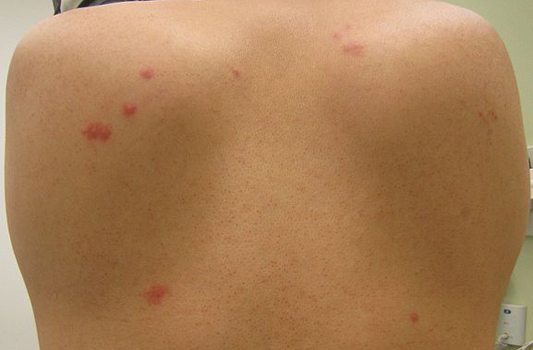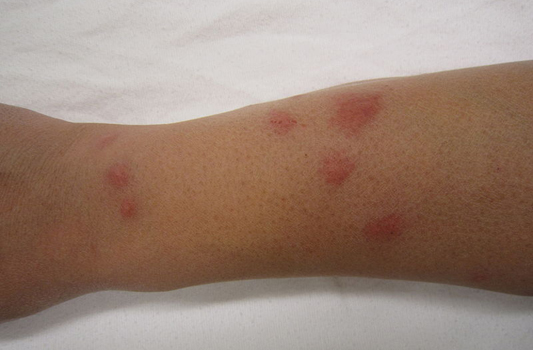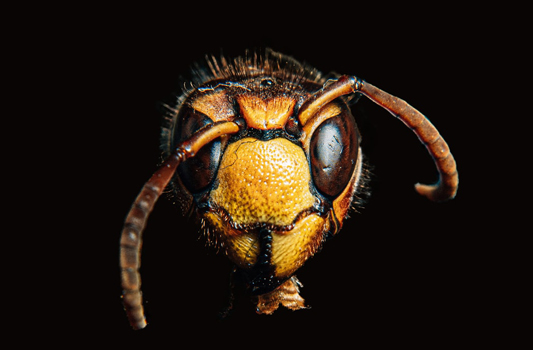Pest Control Guru - Pest Exterminator Edmonton
When you want your pests EXTERMINATED, we're just a call away.
Mouse Pest Exterminator Edmonton
When you find mice in your home you know there is a real problem. In Edmonton, everyone knows that when you see one, you know there are more!. Call Pest Exterminator Edmonton to exterminate them for you today!
Bed Bug Pest Exterminator Edmonton
Bed bugs are very small and require a professional Pest Exterminator Edmonton to exterminate them. Bed bugs feed on the blood of mammals and humans in particular and we will exterminate them for you.
Ant Pest Exterminator Edmonton
Ants are prevalent year round in Edmonton and infest houses, apartment buildings and businesses. Ants can be a nuisance inside or outside of a building or in your yard, we will exterminate them for you.
Pet Friendly, Non-Toxic Bed Bug Pest Exterminators Edmonton
Our experience with Bed Bug Extermination in Edmonton shows us that the use of natural bio-pesticides is the most effective way to Control Bed Bugs. The bio-pesticide is applied strategically in bands where the bed bugs are known to walk and direct spray contact is not necessary. Bed Bugs of every stage or sex are killed within 4 to 10 days of initial short-term contact with treated surfaces.
Edmonton Bed Bug exterminator professionals can help. If you think you have Bed Bugs, call Bed Bug Exterminator Edmonton now 587-805-DEAD (3323) for a free assesment and treatment procedure information.
What we will do for you!
1. Bed bug inspection
A certified Pest Control Guru specialist will perform a thorough inspection of your property, looking for evidence of bed bug activity and potential risk areas.
2. Bed bug removal
If we find a bed bug infestation, Pest Control Guru will customize a treatment plan from our comprehensive suite of solutions, specific to your needs.
3. Guaranteed protection
Pest Control Guru offers a 90-day bed bug extermination warranty; monthly follow-up visits to ensure we fully resolved your bed bug problem.
Bed Bug Identification
The first step of successful Bed Bug control or Bed Bug Extermination is the Identification of the Bed Bugs. Adult bedbugs have flattened, broad, oval bodies, about 4-5 mm long. They are reddish-brown in colour, wingless, with four-segmented antennae. A three-segmented beak containing piercing-sucking mouthparts is found under the head and projects backward between the front legs.
As bedbugs feed on blood from birds and mammals their bodies enlarge and turn red. Bedbugs undergo gradual metamorphosis; have up to 4 generations per year laying 2-4 eggs at a time in cracks and crevasses and on furniture. Eggs hatch in 6 - 17 days. The nymphs go through 5 moults, each stage requiring a blood meal. They reach adulthood within two months at warm temperatures. Adults may live for several months without food.
Although bedbugs have not been shown to transmit disease, Bed Bug Treatment is required as the infestation grows and their bite can be painful. People bitten by bed bugs react differently. Up to 60% of people show no apparent effect from the bite. Others suffer a marked irritation and swelling in the vicinity of the bite. In addition, the psychological effects of bedbugs are disturbing to most people, some even suffering significant trauma for months following an outbreak.
Bedbugs also emit a disagreeable odour. If a room is heavily infested, there will usually be a strong characteristic odor that results from an oily, odorous material secreted by the bed bugs.
Bed Bug treatment or control can be very difficult especially in multi-family housing structures, apartments and in motels/hotels. In these environments, high rates of resident turnover, ease of bed bug dispersal between units can contribute to the presence and spread of bedbugs. In some cases, communication barriers such as literacy and language limitations may also all contribute to chronic infestations.
Education is a very important component of an IPM program to control bedbugs. Clients need to be able to identify pests early in an infestation and to avoid behaviors and practices likely to lead to pest infestations; this is especially true when considering bed bugs in Multi-family housing units. The Pest Management Regulatory Agency Bed Bug Factsheet can be used to help educate clients and residents of dwellings needing bedbug control.


Bed Bug Monitoring
Monitoring for bed bugs is important to know what will work best to control or exterminate them. Under normal conditions, bed bugs feed at night. Their flat bodies allow them to hide in cracks in beds, bedside furniture, dressers, wallboards, door and window frames, behind pictures, under loose wallpaper, and in rooms near host sleeping areas.
After feeding on the blood of a human, they will defecate, and this will appear as small black spots and will be found near their hiding place. It is important to look for these spots as indicators of bedbug presence.
The bedroom is usually the center of infestation. All dark cracks and crevices are potential harbourage areas. If a bed bug infestation is suspected the following areas should be inspected: -> bed creases, crevices and seams, bed fame joints and areas where steel rods join any wooden portions of the structure, curtain folds, any chesterfields or chairs in the bedroom, pictures, lights, light switches, plugins, radiators, plush animals in bedroom, suitcases in bedroom, and any camping, sleeping equipment used by the resident,
Since bedbugs require a blood meal at each moult, they will establish themselves primarily on or near beds or chairs where people rest. They will travel up to 6m (20 ft.) or more from an established harbourage to find a blood meal. Upholstered chairs, mattresses, bed frames and adjacent potential harbourage sites such as behind baseboards, in cracks and crevices, in electrical outlets, under loose carpet, etc. should be checked for bedbug infestations. Bed bugs are primarily transferred to un-infested areas on clothing, bedding, luggage and furniture.
If infestations recur after treatment, some harborage areas were likely missed or it is possible that the structure is being re-infested. A thorough re-inspection should determine which is occurring and the management plan should be revised to include all new harbourage sites.
Ongoing monitoring for continuous use dwellings should be conducted to check for re-infestations (e.g., in motels, apartments etc.). In these types of structures, a detailed record keeping approach including harbourage sites, pesticide use and application methods as well as non-chemical approaches will all help minimize the time required to monitor for pests and ideally help prevent pests from becoming established.

Cockroach Pest Exterminator Edmonton
These tough insects are great at hiding, constantly looking for food, and breed so fast that they often create tremendous infestations very quickly. Cockroaches have been around for a long time. At Pest Exterminator Edmonton we know how to find the cockroaches and we will exterminate them for you.

Wasp Pest Exterminator Edmonton
Wasp nests on your property need to be handled with care for the safety of your family and pets. Bring in Pest Exterminator Edmonton to remove your nests safely. At Pest Exterminator Edmonton, we are your wasp Exterminators, we know how to find wasp nests and safely remove them so that you don’t have to worry about being stung.

Squirrel Removal Service
Squirrels are one of the most common species of wildlife the average person runs into (outside of pigeons). Most of the time, they are running around lawns, trees and bushes and around wooded areas. They are famous for getting into attics as well as running up trees and across electrical wires, rooftops and other areas.
Learn More About the Pest Extermination services we provide in Edmonton.
Call NOW to speak with an Pest Exterminator Edmonton that will work with you on exterminating your pest problem today and we can give you peace of mind that the pests are DEAD.

Pest Exterminator Edmonton
Are You Searching Everywhere For An Pest Exterminator Edmonton...
- Mouse Pest Exterminator Edmonton
- Bed Bug Pest Exterminator Edmonton
- Ant Pest Exterminator Edmonton
- Wasp Pest Exterminator Edmonton
- Cockroach Pest Exterminator Edmonton
Your Search Is Over!

Contact Pest Exterminator Edmonton
Pest Exterminator Edmonton - We serve all of northern Alberta!
- 9420 111 Ave NW
Edmonton
AB T5G 0A4
E: info@pestcontrolguru.ca
P:587-805-DEAD (3323) -